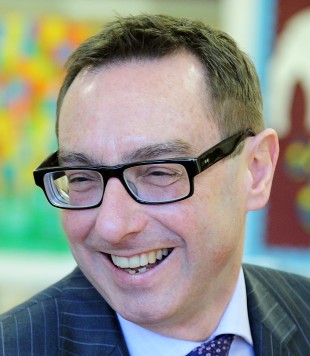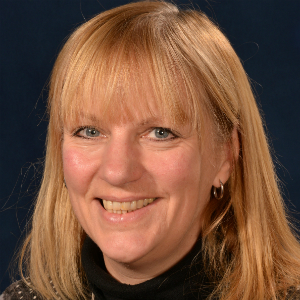 If only the cab driver had been a district nurse he would have known the way from Mottingham station to the Leg Club. It shouldn’t have been so difficult to find. Even with the post code in the sat nav the church hall where the Club was being held eluded us. Fortunately Michelle, the district nurse who got me back to the station at the end of the Club, knew all the rat runs, back streets and short cuts. But that was not the only skill the district nurses at the Club demonstrated that afternoon.
If only the cab driver had been a district nurse he would have known the way from Mottingham station to the Leg Club. It shouldn’t have been so difficult to find. Even with the post code in the sat nav the church hall where the Club was being held eluded us. Fortunately Michelle, the district nurse who got me back to the station at the end of the Club, knew all the rat runs, back streets and short cuts. But that was not the only skill the district nurses at the Club demonstrated that afternoon.
Anxious about being late I swept into the church hall. The lady at the door was slightly bemused when I asked for the Leg Club. And I wasn’t surprised when I glanced over her shoulder and saw a cluster of young mothers and their babies. Wrong room. The Club was next door and buzzing with activity.
I was greeted by Annabelle Barton who is a volunteer for the Lindsay Leg Club Foundation. She explained that the members and volunteers fund the social activities and running costs of the Club and the nursing care and clinical supplies are provided by Bromley Healthcare Community Interest Company.
The Foundation is a charity created by Ellie Lindsay. She is an experienced district nurse, who, in 1995, set up the first Leg Club in Suffolk. Clinics were held weekly in a community cottage on an informal basis. Patient contacts quickly grew and she realised her ambition of developing this model of care in which people with lower leg problems came together for expert nursing care in a very sociable atmosphere. The objective is to relieve suffering from leg ulcers and to manage them effectively as well as promoting well legs. Ellie is now retired from district nursing but continues to run the Foundation with unequalled drive and passion.
Leg ulcers are debilitating and can be painful. And they can be stigmatising. The dressings and bandaging can be bulky and obvious and, if the ulcers become infected, smell badly. All of which creates a recipe for social isolation and depression. People with leg ulcers do not want to go out and can be embarrassed by their condition.
By bringing together people with the same or similar conditions as the Leg Club does effectively gets around this problem of social isolation. There was an extraordinary camaraderie as you would expect of a club, but also a sense of the shared experience itself being therapeutic. Those whose ulcers were healing well were reassuring those with new ulcers that, although the healing process can be lengthy, the success of the Club in healing ulcers completely is undeniable.
For me the most striking feature of the Club was that its members were real people, not medicalised as patients. They were happy to talk about their home lives, their interests and hobbies. For some this was their only outing of the week; their only human contact in a week. Mr Mortimer[1] was 80, lived alone, loved gardening and maintained his independence because he could still drive, despite the condition of his legs. There were other gardeners, knitters and fanatics of word puzzles.
Mrs Brown’s legs had nearly healed. She had been having compression dressings for six weeks and was full of enthusiasm for the Club. She not only enjoyed the company of the other members but also contributed to the education of student nurses. Heidi and Nicole were fully involved washing the members’ legs, massaging them with emollient and learning the intriguing and intricate compression bandaging technique.
On a normal day the nurses would see about 25 members with an age range from 35 to 92. Today there were 32 members. And a suit from Whitehall showing an interest didn’t speed up the process! They have had to extend their hours because of the demand. They usually start at 2pm but since members started arriving at 1.30pm they’ve opened earlier. Because it’s a drop-in service getting there early means you get seen more quickly. You can then spend the rest of the afternoon enjoying a chat over tea, biscuits and exercise classes, as well as listening to any external speakers such as Rogue Traders or the medicines management team. The last two members were having their dressings finished at about 5pm. Everyone is seen regardless of the scheduled finish time of 4pm. The goodwill of the nurses and volunteers to keep going was phenomenal.
And the service is not a conveyer belt of dressings. Dawn, a tissue viability nurse (who shares her passion for tissue viability with Michelle), not only dressed Mr Crisp’s legs but also explored how well his diabetes was being controlled. This is not just idle interest but a real clinical desire to promote his health and make her contact with him on this weekly basis as meaningful as possible. She also explained to me the thorough assessment they undertake for new members. This is a holistic service completely in tune with Ellie Lindsay’s early vision for the Clubs.
One of the things I was concerned about was the lack of privacy whilst having the dressings done. The dressing area was in the centre of the hall where everyone can see the state of your legs. But everyone I spoke to didn’t mind this at all. One lady said it took a little getting used to, but when the nurses offered to screen her from view she declined. And it’s all part of the sociable nature of the Club. I suppose that in reality if this isn’t the model for you, you don’t come back. But many do and with a healing rate of 73% and a low recurrence rate there is good reason to continue coming to the Club. And its supportive nature is also vital – 77% of the members say the Club helps them cope better with their ulcer and their daily living.
As the queue dwindled I also had a chat with Frank, a district nurse with decades of experience. His passion for this model of care was clear: his years of practice proving to him the effectiveness of this way of working. And he is so committed to it that he runs half-marathons to contribute to the fundraising so the charity can continue to rent the church hall. Then it dawned on me to ask about smelly ulcers. It had struck me that I hadn’t experienced any offensive odours all afternoon. Frank was clear: malodorous wounds are a failing. They are either infected or have had the dressings on too long (and plausibly both). His standards were such that they should never occur.
With values and principles like that, and the founding drive still evident from Ellie Lindsay to spread this model around the NHS and the country, this social model of care is effective and strong. It’s an unglamorous field of nursing but the positive impact on the lives of those 32 people I saw at the Club in Mottingham is profound.
To find out more about the Lindsay Leg Club Foundation visit www.legclub.org
[1] All the members’ names have been changed
David Foster is Deputy Director of Nursing and Midwifery Advisor at the Department of Health
[1] All the members’ names have been changed
